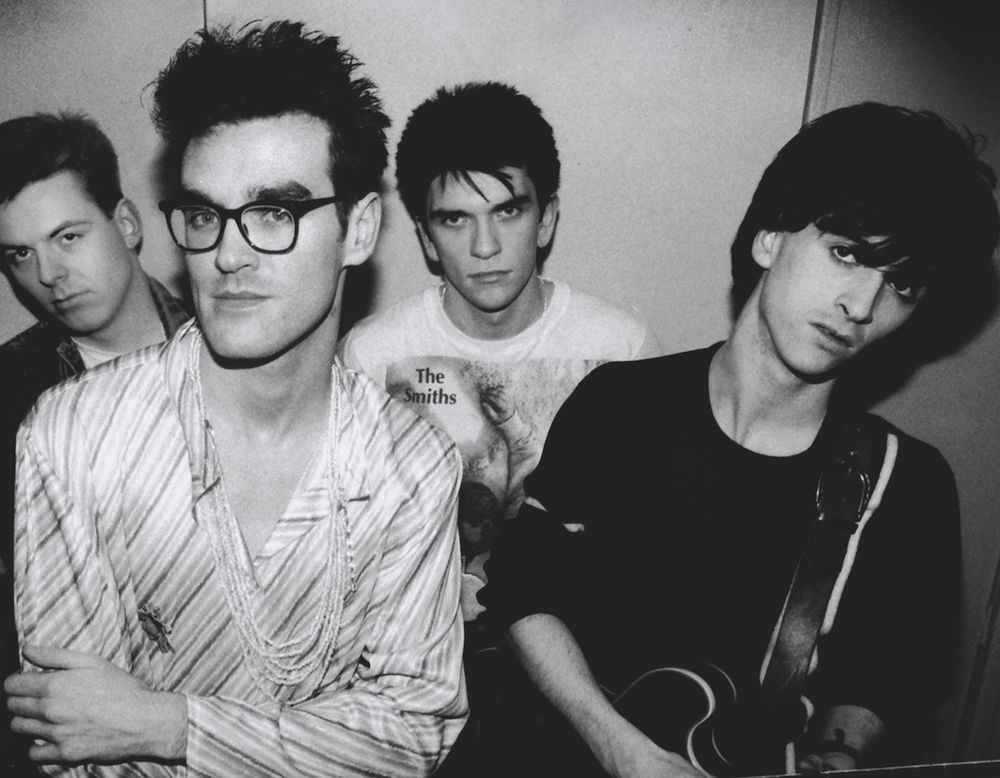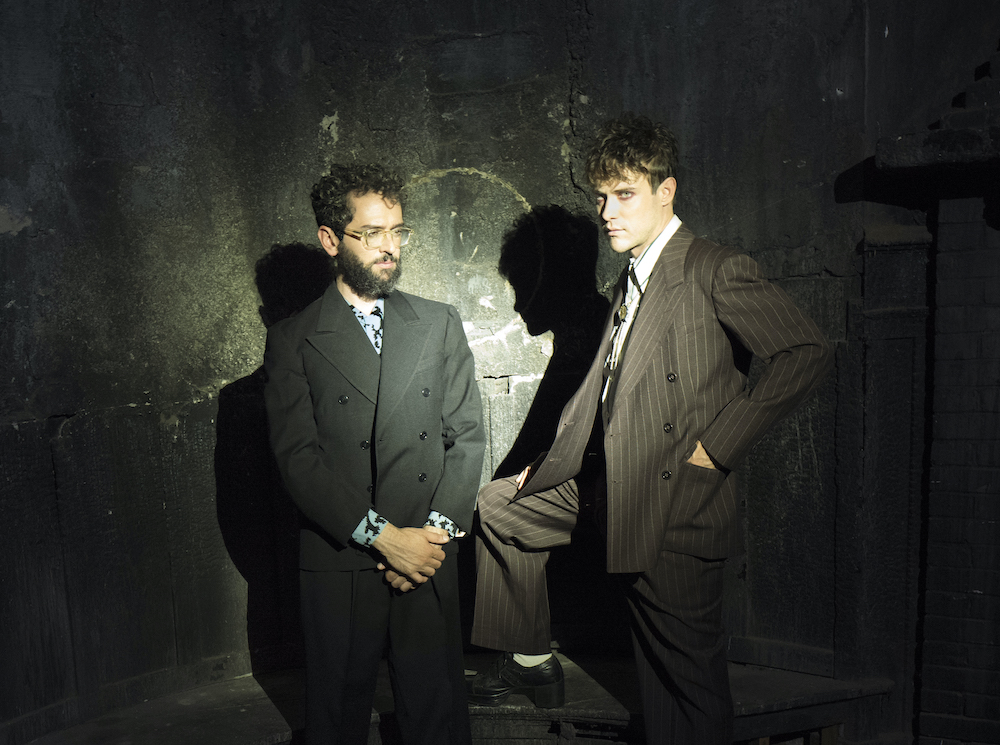It's shaping up to be the summer of Kate Bush. After Stranger Things used 1985's "Running Up That Hill (A Deal With God)" in the first part of its new season, the song became an instant viral hit, storming up the charts and even reaching #1 on Spotify's global chart earlier this week. (In the US, the song is #8 on the Billboard Hot 100; it's her first-ever top 10 hit here.) Bush — who is apparently a fan of the series — released a rare statement in response via her website: "It’s all really exciting! Thanks very much to everyone who has supported the song. I wait with bated breath for the rest of the series in July."
"Running Up That Hill" hasn't necessarily been out of the pop culture consciousness — among other things, Meg Myers' cover was a major hit in recent years — but the placement has ignited interest in Bush's overall catalog and career.
A self-taught pianist, Bush earned a record deal with EMI as a teenager after crafting a demo with Pink Floyd's David Gilmour; the latter had recognized her songwriting talent right away. Bush was already a prolific composer and songwriter, and started playing out in London as the KT Bush Band prior to recording her 1978 debut, The Kick Inside. That album spawned a UK #1 hit, her 1978 debut single "Wuthering Heights," and Bush was off.
Over the next few years, she moved toward producing her own albums and built a studio near her home to record her music. These things contributed greatly to her unfettered creativity, which evolved from piano to synthesizer-driven technology such as the Fairlight CMI. Bush also became known for combining avant-garde dance moves into her performances — her 1979 Christmas Special is the stuff of legend — which enhanced her music's impact.
Today, Bush tends to stay out of the spotlight. She last released an album in 2011 (50 Words For Snow) although she did emerge in 2014 for a 22-date concert residency, Before The Dawn, that drew fans from all over the world. Her legacy lives on via her many high-profile fans — to name a few, Tori Amos, PJ Harvey, Stevie Nicks, Sky Ferreira, Rosalía, Florence Welch, and Anohni — and perhaps the person who is her biggest champion, Big Boi of Outkast.
You really can't go wrong with anything in Kate Bush's catalog — and 1985's Hounds Of Love is a good place to start with her albums — but here's a primer of notable Bush songs for when you need a break from hill running.
"King Of The Mountain" (from Aerial, 2005)
Bush's production of new albums has slowed to a trickle, but any music she releases is worth the wait. Thirteen years after The Red Shoes, she released Aerial, featuring the single "King Of The Mountain," which muses whether Elvis Presley is alive and living off the grid, away from the spotlight. On a deeper level, however, the song is a canny commentary on the ridiculous byproducts of being famous — "There's a rumor that you're on ice/ And you will rise again someday," she shares — and the way fiction becomes conflated with the truth with public figures. "I mean, that kind of fame that he must've been living with, must've been unbearable," she told the BBC4. "I can't imagine what it must be like. I don't think human beings are really built to withstand that kind of fame." Musically, "King Of The Mountain" is a joy, with a repetitive electronic element reminiscent of Björk that sounds like it could've been released in 2022.
"Hounds Of Love" (from Hounds Of Love, 1985)
Notably covered by the Futureheads, the vulnerable title track of Bush's 1985 LP is "about someone terrified, who is searching for a way to escape something," she said in an interview that year. "My voice, and the entire production, are directed towards the expression of that terror." Accordingly, Bush gulps in fright and bellows dramatically, as thundering drums and cascading harmonic layers unfurl around her like a shrouded fog. It's clear that what she's experiencing is justified: The protagonist fears love and a relationship, she shared in another interview, and it's a literal matter of life and death. "[The song is] very much using the imagery of love as something coming to get you and you've got to run away from it or you won't survive."
"The Man With The Child In His Eyes" (from The Kick Inside, 1978)
Written by Bush at age 16, "The Man With the Child in His Eyes'' is another example of her knack for introspective songs that validate the interior lives of women and girls. "It was a very intimate song about a young girl almost voicing her inner thoughts, not really to anyone, but rather to herself," she said during a 1981 appearance on the TV show Razmatazz. Sparkling orchestras and her burbling piano intertwine in a gorgeous, almost fugue state, bolstering the character's observations. "The piano just started speaking to me," she said in a promo interview. "It was a theory that I had had for a while that I just observed in most of the men that I know: the fact that they just are little boys inside and how wonderful it is that they manage to retain this magic."
"Babooshka" (from Never For Ever, 1980)
Bush was intensely prolific early in her career; 1980's Never For Ever was the third LP she released in less than three years. "Babooshka" became one of her biggest UK hits to date, a strutting rock song that details a woman who decides to "test her husband," as the lyrics put it, by sending him love notes supposedly from someone younger. The entire Cyrano de Bergerac-like plan backfires when she disguises herself for an in-person meeting, and her worst fears come true: Her husband is attracted to the fake her, not the real her. "Babooshka" is also notable for using the then-new Fairlight CMI, the digital technology that would become a major part of Bush's sound and creativity as the 1980s progressed. Listen for the sound of breaking glass as the song crescendos.
"The Dreaming" (from The Dreaming, 1982)
Bush has rarely been more experimental than on The Dreaming. The disorienting title track incorporates instruments such as the didgeridoo and bullroarer, as well as animal noises and Fairlight CMI-driven sounds; the overall effect is of a song taking place in a ferocious battle. That was no accident, she said in 1984, when discussing the song's pointed message. "For many years it has greatly disturbed me, the way 'civilized' man has treated ancient tribes such as the Aborigines, Red Indians, Tasmanians. And because of the beauty of the Aborigines' music and the way it seems to exude space, and the feeling of having great contact with the earth, I felt it was the perfect way to portray this feeling of invasion by white man."
"Rubberband Girl" (from The Red Shoes, 1993)
Like many UK artists, Bush's biggest American successes came long after her initial popularity at home. Case in point: In 1989, her single "Love And Anger" spent three weeks at #1 on the Billboard alternative radio chart. A few years later, Bush was still a modern rock darling, earning a top 10 airplay hit with "Rubberband Girl." Whimsical and quirky, the tune is a "silly pop song," she told Mojo in 2011 — an apt description for music and vocals that mimic the malleable, push-and-pull traits of a rubberband.
"Suspended In Gaffa" (from The Dreaming, 1982)
An ornate waltz with crisp, conspiratorial vocals and prominent synclavier and strings, "Suspended In Gaffa" feels like antique treasure. The song's premise is also timeless, rooted in religious longing. "The idea of the song is that of being given a glimpse of 'God' — something that we dearly want — but being told that unless we work for it, we will never see it again, and even then, we might not be worthy of it," she said in 1982. Human nature takes over, however, she added: "Of course, everybody wants the reward without the toil, so people try to find a way out of the hard work, still hoping to claim the prize, but such is not the case."
"This Woman's Work" (from The Sensual World, 1989)
Decades before Stranger Things, Bush's music was already soundtracking pivotal media moments. In the 1988 John Hughes movie She's Having A Baby, the spare ballad "This Woman's Work" plays when the main character is waiting for news on potential complications while his partner is giving birth. "We had the piece of footage on video, so we plugged it up so that I could actually watch the monitor while I was sitting at the piano and I just wrote the song to these visuals," she said in 1989. "It was almost a matter of telling the story, and it was a lovely thing to do." Although tied to a particular movie scene, "This Woman's Work" transcends its origins; its protagonist acknowledges and gives thanks for the often-invisible physical and emotional labor undertaken by women, a radical gesture then — and now.
"Cloudbusting" (from Hounds Of Love, 1985)
The aching, string-swept "Cloudbusting" contains some of Bush's best lyrics. At one point she compares someone to a glow-in-the-dark yo-yo ("What made it special/ Made it dangerous"); on the other side is a sweetly optimistic chorus: "I just know that something good is gonna happen/ I don't know when/ But just saying it could even make it happen." Make no mistake, however: "Cloudbusting" is introspective and aching, searching for something — or someone — to make life a bit more manageable after some heavy loss. "All of us tend to live in our heads," she told the Associated Press in 1989. "In 'Cloudbusting,' the idea was of starting this song with a person waking up from this dream: 'I wake up crying.' It's like setting a scene that immediately suggests to you that this person is no longer with someone they dearly love."
"Wuthering Heights" (from The Kick Inside, 1978)
Talk about setting the bar high: At age 19, Kate Bush was the first woman to have a #1 UK hit with a self-penned song, her pirouetting debut single "Wuthering Heights." She was inspired to write the song after reading Emily Brontë's Wuthering Heights and being drawn to the book's doomed couple, Cathy and Heathcliff. "This young girl in an era when the female role was so inferior, and she was coming out with this passionate, heavy stuff," Bush told Record Mirror, adding, "When I was a child I was always called Cathy, not Kate, and I just found myself able to relate to her as a character." At once playful and heartbreaking, Bush's "Wuthering Heights" tells the story of Cathy haunting Heathcliff from the great beyond, begging for comfort ("I'm so cold/ Let me in your window") and lightly threatening eternal togetherness ("Let me grab your soul away"). Bush purposely wails in a higher register as if she was a spirit, underscoring the song's obsession. "The idea of a relationship that even when one of them is dead, they will not leave the other one alone," she told MTV in 1985. "I found that fascinating."
And here's the list in streamable playlist form:






